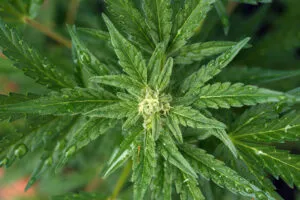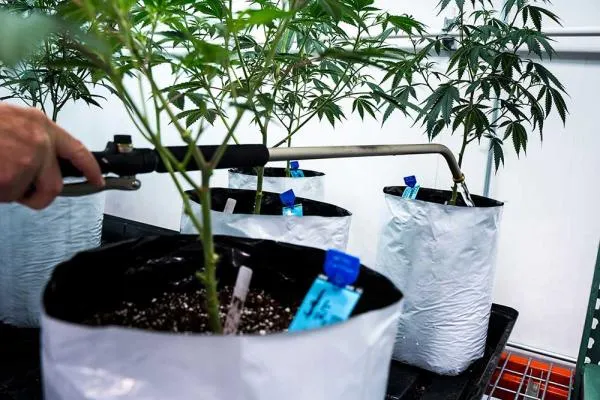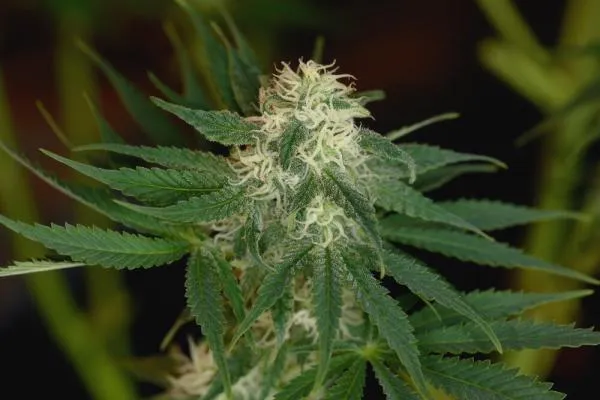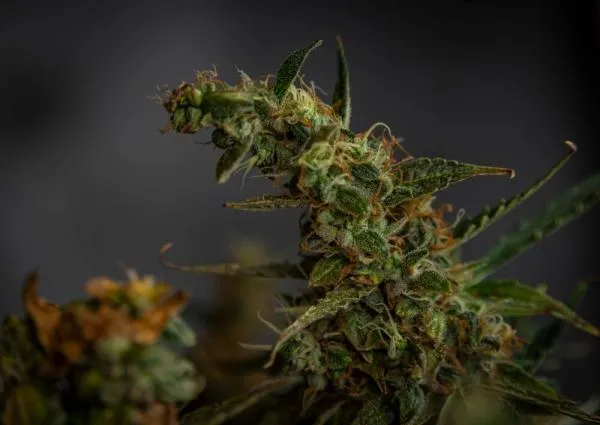When beginning to grow marijuana you may think watering them will be the easiest task you have. But, like nutrients, lighting and environmental controls - watering marijuana plants properly is just as vital to their growth. Why? Not only are cannabis plants made up of 80% water, but water is the gateway for essential nutrients to absorb. So, how often to water your plants will be an important factor to figure out from the start. Whether you’re just beginning or troubleshooting a current crop our complete guide to watering weed is all you’ll need to succeed. First thing’s first - let’s talk about timing.
Water schedules & timing
To answer the questions how often or when you should water your cannabis plants you have to consider your grow’s individual environment. That’s because the schedule and timing you choose will rely heavily on your set-up and other factors. The amount you water your plants depends on their age, size, growing medium and temperatures. If you’re thinking about winging it and watering without a schedule, think again. Overwatering or underwatering marijuana plants can affect their oxygen intake which can cause major issues with the crop all together.
Since young plants have a less complex root system and are smaller in nature, they’ll require less water than maturing crops. Small, growing weed plants normally need watering every 2-3 days.
But the size and construction of your pot will affect watering schedules, too. Even the growing medium or soil you fill them with. Typically, cannabis plants benefit from light or airy soils with proper drainage. So if you’re growing in pots, ensure there are holes in the bottom and that you have a plan for where the draining water will go. This is highly important because without proper drainage, your plant could suffer from deficiencies.
Speaking of soil, more solid or compact dirt requires less watering than airy versions. If it takes 3-4 days for the soil to dry out, re-adjust your plants drainage system. The best way to gauge when or how much water to give your plant is to lift it and feel the overall weight. If the plant feels light it needs to be watered. Another method is to stick your finger into the soil slightly, and feel the moisture content for yourself.
As for size, you want to make sure that your plant grows with the size of your pot. Hence the method of up-canning as cannabis plants grow. If you’re to overwater a small plant in a big pot it’ll affect the water retention, overall.
Temperature and age are the last factors to consider. Just like humans, if you’re in a hot environment you’ll require more H20 too. Cannabis plants are no different. Adjust your watering to match the climate of your growing space, increasing as the plants grow.
Overwatering and underwatering weed plants
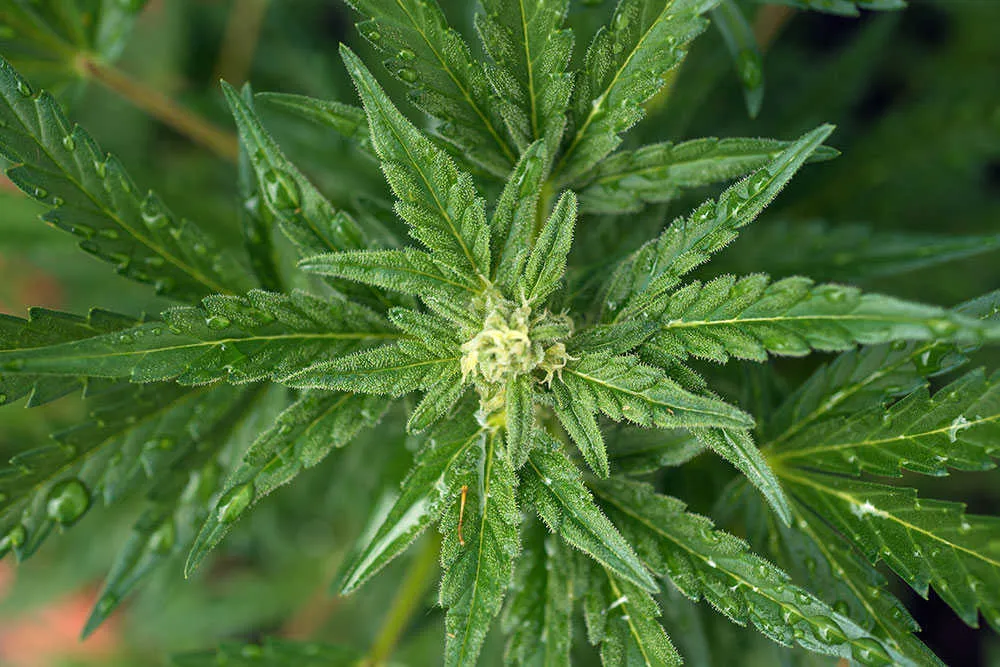
Similar to other plants, you’ll be able to see if you’re watering too much or too little. Just to recap - here are a few telltale signs if your plants are being overwatered or underwatered.
- Underwatered: If you’re underwatering your plants they may begin to show signs of weakness. This includes leaf color changing or leaves turning brittle. Not to mention your soil will be dry or crisp to the touch.
- Overwatered: You may think there’s never too much of a good thing. But with cannabis plants too much water can cause leaves to droop, growth to slow to a halt and yellowing leaves.
To avoid underwatering or overwatering your cannabis plants you can follow a simple rule for the size of each pot you use. To water fully use half of the capacity of the pot, in litres. So, if you have a 6L pot use 3L of water.
Properly watering cannabis plants
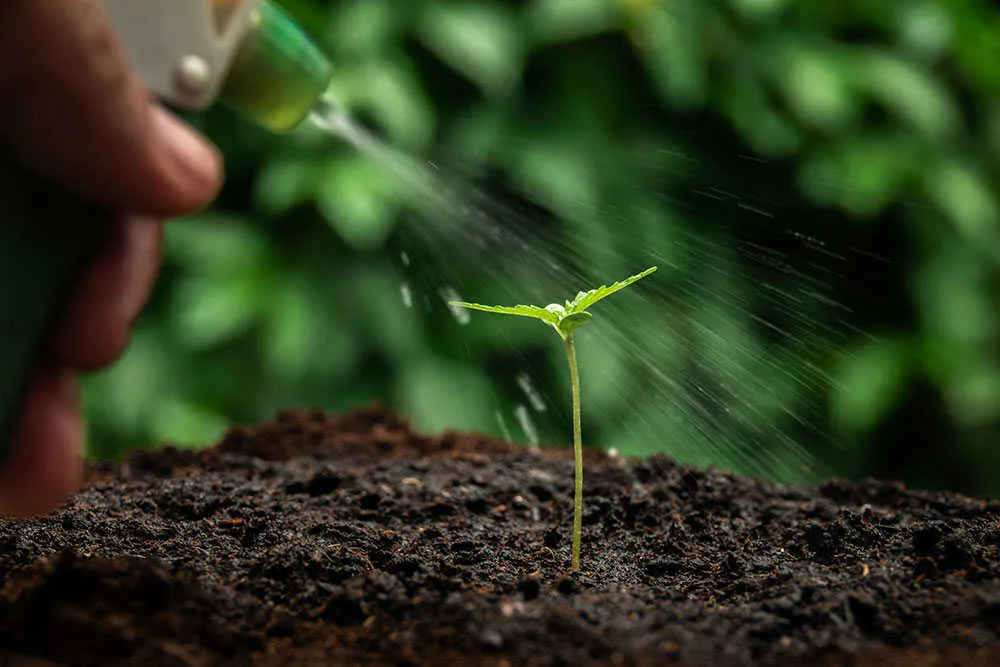
Once you’ve figured out when your plants need watering, and how much they need...the next question is, how do you water them properly? Our first tip is easy - watering weed is not a race. Whether you hand water or set up a drip system you’ll want the water to flow slowly. When pouring too much water all at once, channels form and drain more quickly. This doesn’t allow full absorption into the roots for proper distribution of nutrients.
Runoff is another thing to consider when watering weed plants. Each time you water with feed or nutrients, you need to allow for 10-20% extra to runoff from the bottom of the pot or container. Without doing this, natural salts don’t get properly washed out. Built up minerals can cause pH problems (we’ll talk more about that, next) or nutrient lock-out and issues. In addition, if you’re using trays to catch the runoff from your pots make sure that you’re also emptying it once full. If you don’t, bacteria, pests or mold can grow and fester causing issues themselves.
What about Ph?
We can’t talk about watering marijuana plants without addressing Ph. Especially considering, it’s one of the most important factors. If the Ph levels are off in your water then your plants will be unable to process the nutrients you feed them. Essentially wasting your nutrients, and deterring your plant from optimal growth.
The type of soil you use also affects what level of Ph your water should be. If you’re using regular soil then 6.3 - 6.8 Ph levels are recommended. For coco based soils, or hydroponics a Ph range of 5.5 - 6.1 is most efficient. So, how do you find out what the Ph levels are in the water you’re using? You’ll need a few specific supplies to know and adjust if necessary.
You can invest in a Ph measuring stick which overtime will pay off for itself. As you should check the Ph of your water prior to every watering. Ph measuring drops will also do. Both methods read the levels of Ph in your water so you can ensure you’re in the correct range. From there, if your Ph is too high or too low you’ll need either “Ph up” or “Ph down” solution. These liquids effectively raise or lower the Ph in your water to gain the appropriate level.
In closing - Water carefully
Similar to every factor that goes into growing cannabis, watering also takes careful consideration and close monitoring for optimal growth. That’s because water is one of the most essential factors for nutrient uptake and overall healthy growth of your cannabis plants. As a result, be sure to follow this guide when deciding how often to water your marijuana plants, how much, and even how to do so properly. By taking the time to water with extra care and consideration, your crops will pay off in the end.
